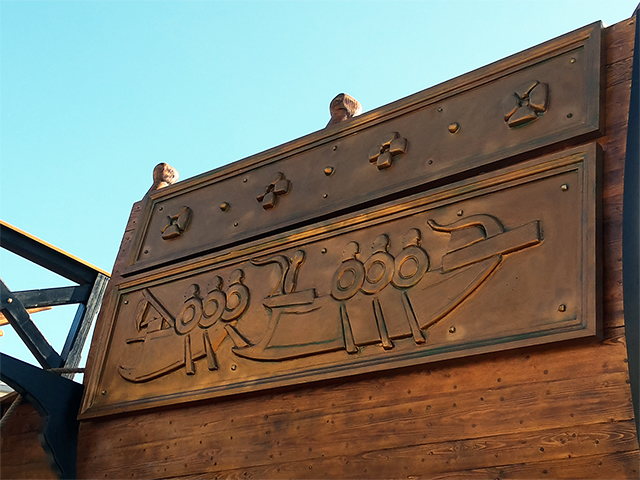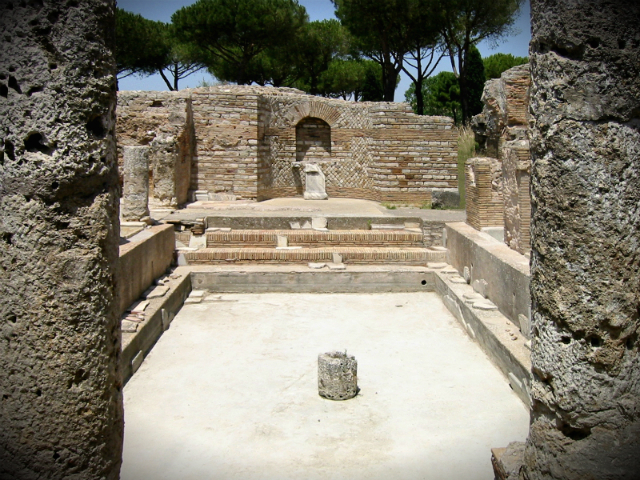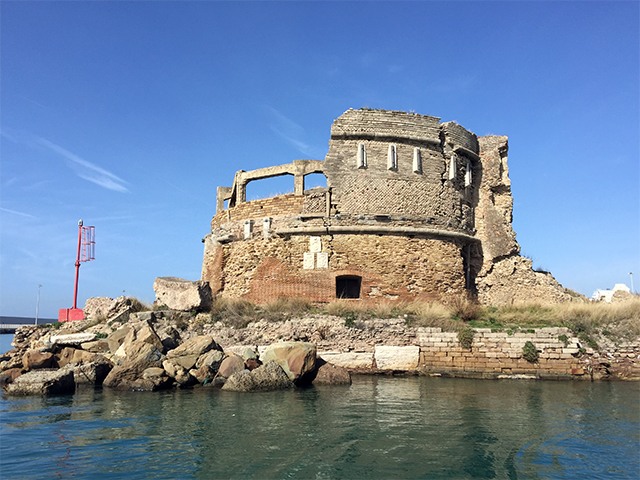10 Things (maybe) you don't know about Civitavecchia and the Port
From the secrets of Fort Michelangelo to the paintings in Piazza Leandra; from the designs by Leonardo to the statue of Neptune: these and more stories about Civitavecchia and its portDo you think you know everything about the Port of Civitavecchia? With over 2000 years of history, the port of Rome is one among the main ports in Italia and is the only one that can boast of having a history that old and so full of events.
Planned in 106 B.C. by the great architect Apollodorus of Damascus, by will of emperor Trajan, the Port of Civitavecchia has deeply marked the history of the city and does it still now. Yesterday, strategic hub for the Roman Empire and important junction for trading routes, today main Italian port for cruise traffic in the Mediterranean.
Here's a review of stories, anecdotes and curious facts related to the port, to the main monuments and personalities that maybe you didn't know!
1. THE NAME OF FORT MICHELANGELO
It might sound extrange but not everybody knows that the original name of by far the most important monument of the city, as well as the most important monument of the port, is actually not Fort Michelangelo but Fortress Giulia.
The fortress was actually named after Pope Julius II, who comissioned Bramante to build the fortress to protect the city from pirate raids. The construction was entrusted to Giuliano Leno and Antonio da Sangallo the Young except the fortified tower, the big octogonal tower facing south.
According to some sources, during the papacy of Paul III Farnese, the construction of the fortifies tower was comissioned to the great Michelangelo Buonarroti and that is the reason why the fortress took finally the name that we all know today.
Actually, despite the fact that direct participation by Michelangelo has never been 100% confirmed, the name was so wide spread that finally it was established and became the official name that you will find in any proper guide or map!
You didn't expect that? Well, then you should know that this is not the only curious fact that sees as protagonist our dear Fort Michelangelo!

Fort Michelangelo - Picture by Raffaele Ballirano
2. SANTA FERMINA GROTTO

Statue of Santa Fermina in front of the Fort Michelangelo
The story goes that during Fermina's journey by see from Ostia to Civitavecchia, the yonung girl found herself in the middle of a terrible storm that was about to sink her ship.
It is said that only her prayers succedeed in calming the waves and once she got to the coast of Centumcellae (Latin name for Civitavecchia), the young girl found shelter in a grotto close to the sea.
Inside Fort Michelangelo, in the South-western tower, known precisely as Santa Ferma, it is possible to visit a small chapel in honour to the Saint Fermina: the chapel is right next to the place where Fermina would have found shelter!
To remember the event, every April 28 Civitavecchia celebrates Santa Fermina, patron saint of the city and protector of sailors.
The statue and the reliques of the Saint are taken in procession first around the city streets and then they navigate through the waters in the port for the traditional blessing of the sea, after which they throw a laurel crown to remember all the fallen sailors.
3. THose strange symbols on the Fort Michelangelo (?)
On the façade of Fort Michelangelo together with the emblems of Pope Julius II della Rovere and the fleur-de-lis coat of arms of the Farnese family, a close look will reveal other mysterious symbols apparently inexplicable: letters ad signs carved into the travertine stones from the basement up to the highest point of the fortress.
These incisions that remind of alchemy formulas, astronomy and Masonic symbols have not yet found explanation in any historic document. Who carved these symbols? In which historic period?
Taking a close look to the South-western and western sides of the Fort, you can identify symbols that recall chymical elements: letters Bi (Bismuth), S (Sulphur), the doble overlapping cercle (Arsenic), the cercle with a cross symbol of antimony and planet Venus planet, the cercle with ann arrow symbol of iron and planet Mars, the cut triangle symbol of the Air.
Among these there is also a strange symbol that recalls the Square and Compasses.
These two tools are related to the so-called freemasonry and it was an emblem for free builders in the late Medieval age.

The enigmatic symbol "square and compasses" carved on Fort Michelangelo
For instance, they can be found in the façade of the Loggia dei Fratelli Comancini, the house where builders working on the Basilica of Saint Francis of Assisi in the cloister of the basilica stessa and in the church of San Cristofaro in Perugia.
We know that due to political difficulties, the finalisation of the Fort Michelangelo was delayed many times and that during the Papacy of Paul III Farnese, after well 25 years sin the beginning of the building, the famous fortified tower was ot yet completed. The whole work was at risk of becoming a big failure for the Church.
Did the intervention of the free builders contribute to the finalization of the Fort Michelangelo? If that was the case, were they who carved the strange symbols into the façade of the Fort? (source "You Mysteries").
4. Designs by Leonardo Da Vinci
Local historian Roberta Galletta, in her latest book "Roman Harbour - The small port of Civitavecchia" shows how the great genius Leonardo Da Vinci, not only passed by Civitavecchia, but with his ideas profoundly contributed to the design of the Historic Port providing with his designs a starting point to Bramante for the fortification of the Port.
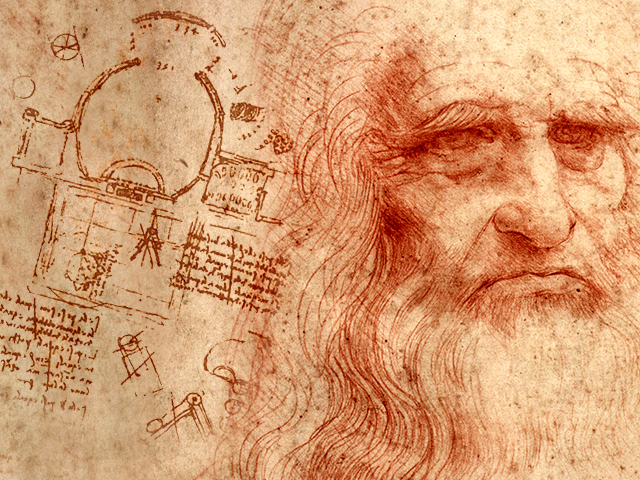
The Port of Civitavecchia: Leonardo da Vinci's secret masterpiece?
The fact that he passed through Civitavecchia and his designs for the Port are proved by 2 leaves contained in the Codex Atlanticus, the largest set of writings and drawings by Leonardo.
In particular, in leave n° 271, regarding the Roman Harbour, Leonardo drew the Port of Civitavecchia, next to studies about weights, geometry of the triangles and many arithmetical operations.
In his design strucks the fact that Fort Michelangelo (Fortress Giulia), under construction at the time, is drawn on the left while the Roman Harbour is drawn on the right, with the ships of which would later be the re-formed Papal fleet wanted by Sixtus V.
To learn more, read this article!
5. MOLO DEL LAZZARETTO, MOST LOVED PLACE IN THE PROVINCE OF ROME
Recently, thanks to the involvement of the association "La Civetta di Civitavecchia", that has led several events to promote the safeguard of the Molo and to launch a new requalification project, the Lazzaretto has been admited by the FAI (Fondo Ambiente Italiano, National Trust of Italy) on the census of "I Luoghi del cuore" ("Places of the heart").
With well 8113 votes validated, the Lazzaretto has conquered the 1st absolute place in the Province of Rome, the 3rd place in the Lazio region, the 5th in the National Ranking for Archeological Sites to be preserved and the 41st place at a National level among well 20.027 overall places.
Fort St. Peter will then remain under the attention of the FAI and we hope that soon there will be the conditions for the requalification of the Fort, which, with over 2000 years of history is the oldest monument of the port of Civitavecchia.
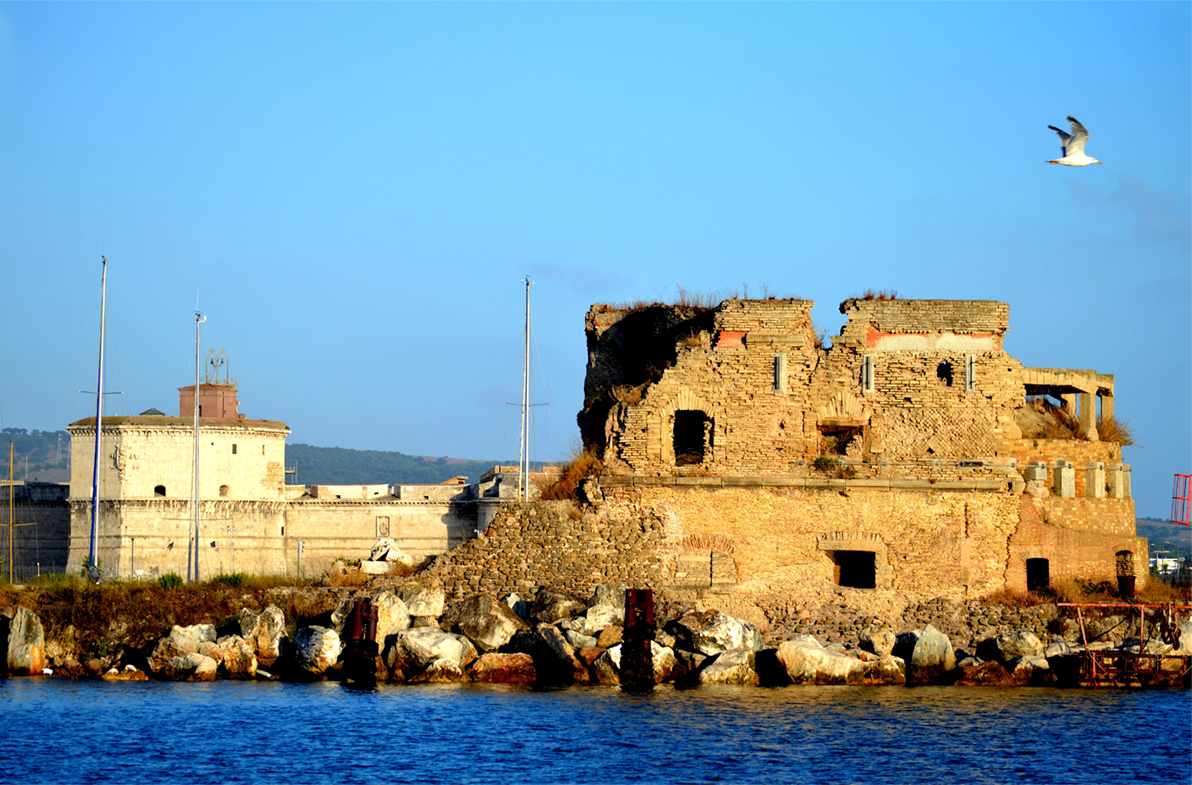
Fort St. Peter on the Molo del Lazzaretto - Picture by Sabrina Delogu
6. STENDHAL'S TRIP TO CIVITAVECCHIA
Not everybody nows that Stendhal, known back then as Mari-Henri Beyle, one of the most important intellectuals of the 19th century, in his consular trips to Italy between 1831 and 1836 he lived and stayed many years precisely in Civitavecchia.
For the record, we must say that the author of "The Red and the Black", who was maybe used to French social and cultural gatherings and to a certainly more wordly lifestyle, did not immediately find his stay at Civitavecchia pleasant, since the city was at that time a small town of some thousands of inhabitants, 1000 galley slaves and 500 guards of the penal colony.
Despite his initial discontent, thanks also to meeting some important local intellectuals, it was right at Civitavecchia where Stendhal found himself again and the desire to write!
In these years, when he travelled in Italy back and forth from Rome to Milan, the French writer began important works including Memoirs of an Egotist, Life of Henry Brulard, and Leucen Leuwen.
Among the prominent figures with whom he was more bond during this stay in Civitavecchia, we must mention Donato Bucci, antique shop in the back-shop of which he usually met together with other intellectuals including Pietro Manzi, jurist and archaeologist; Antonio Acquaroni, famous engraver; Biagio Donati, naturalist and Benedetto Blasi, lawyer and eclectic entrepreneur, important personality in Civitavecchia in the 19th century.
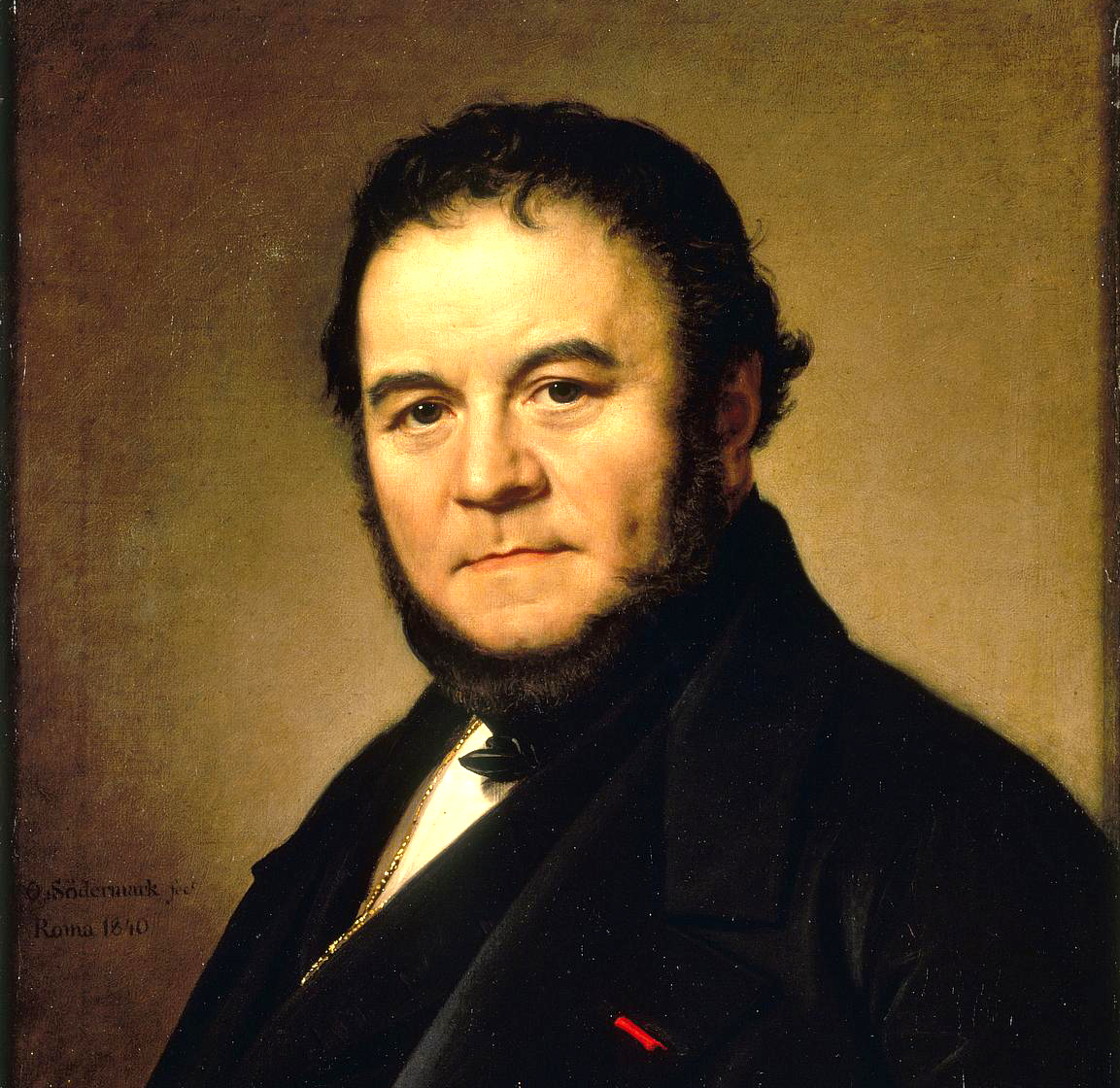
Stendhal stayed in Civitavecchia between 1831 and 1836
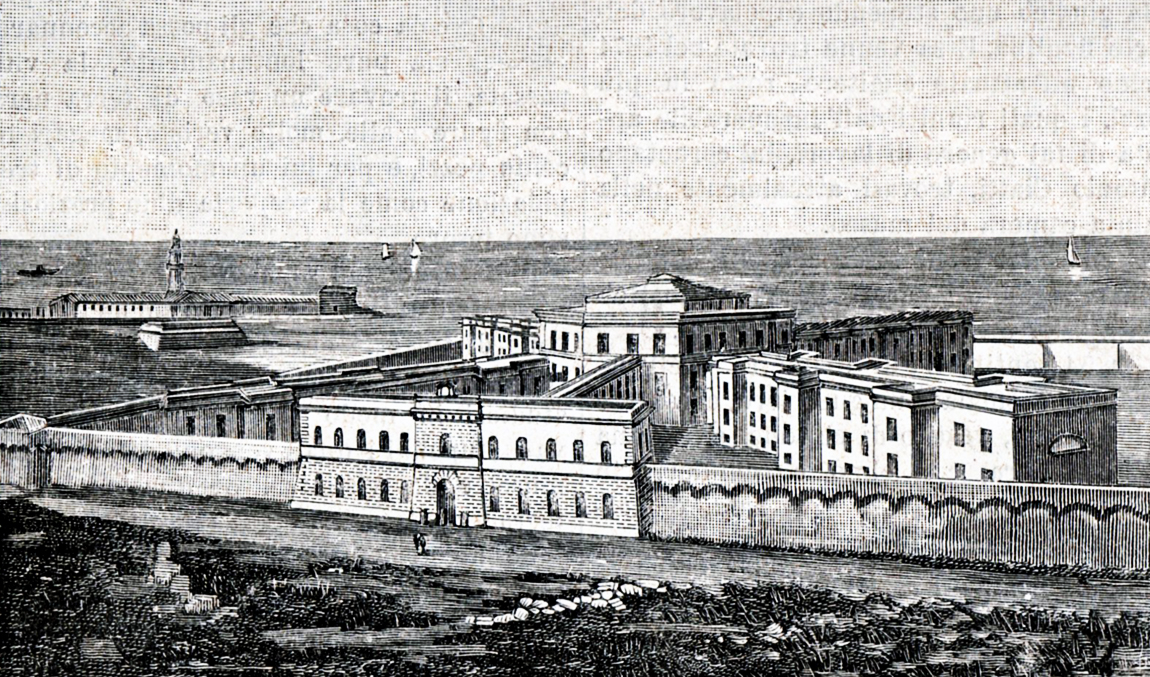
An old engraving of Civitavecchia that depicts the Penal Colony
7. Civitavecchia, Gold Medal for Civil Value
On May 14, 1943, at 3 pm of an upcoming summer, Civitavecchia was nearly burned to the ground by 48 lethal American bombers (B-17), which in eight very violent waves devastated the city.
The exact number of dead people has never been confirmed, but it is said that it was about 500 without counting soldiers, people coming from out of town, those who were about to embark or had just disembarked.
Overall, Civitavecchia has withstood 86 bombings, but none has ever brought the city to its knees as the bombing of May, 14.
On March 8 1999 Civitavecchia was awarded the Gold Medal for Civil Value. These are the words that accompanied the recognition:
"A city fundamentally strategic thanks to its port in the Mediterranean, during the last Wolrd conflict it underwent continuos and very violent bombings that caused the dead to many fellow citizens and the nearly complete destruction of the houses and the port facilities. The population, obliged to find shelter in neighboring towns, once the peace was restablished, they took on bravely the difficult task of rebuilding the city. 1943 - 1945".
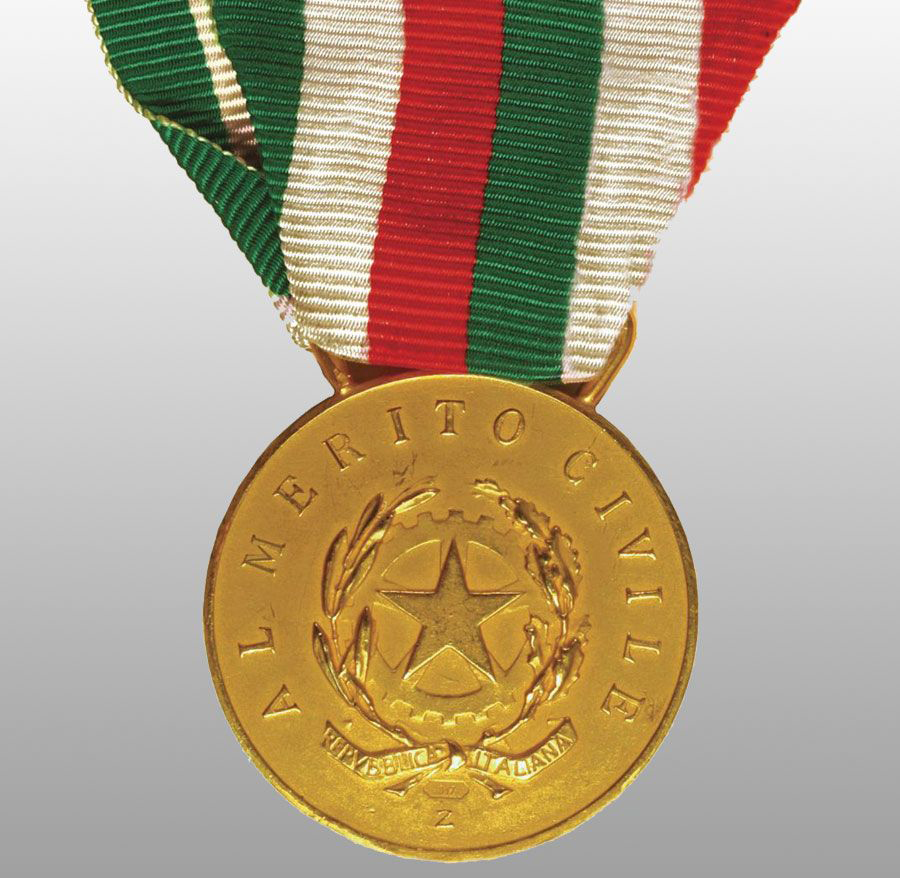
Civitavecchia, Gold Medal for Civil Value
8. POPE JULIUS II AND THE MYSTERY OF THE PAINTINGS IN PIAZZA LEANDRA
Pope Julius II Della Rovere, might not have been a very nice person, but we must acknowledge the fact that he sponsored, during his Papacy, some of the greatest artists in the history offering them the chance to create works that are among the masterpieces of Western art.
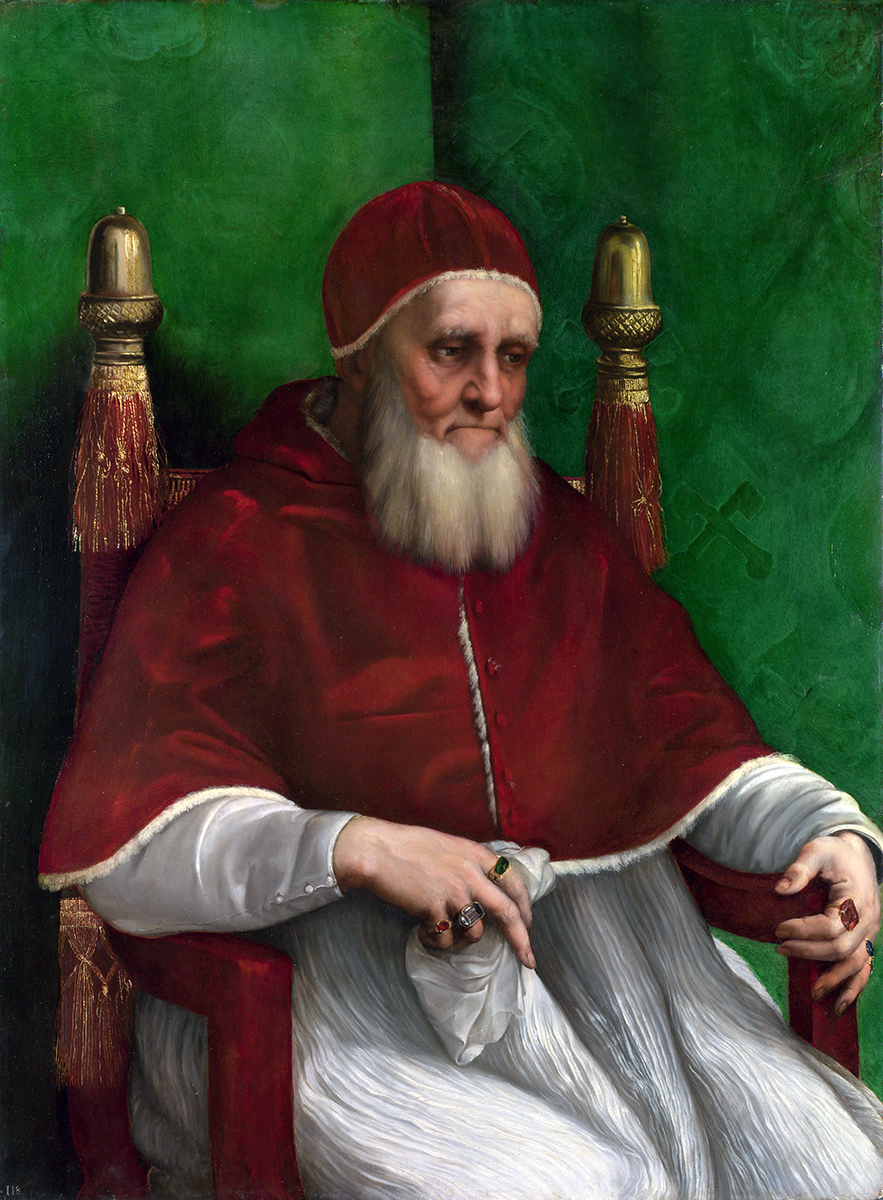
Pope Julius II portrayed by Raffaello Sanzio
His name is closely related to Bramante, Michelangelo and Raphael to whom the "Hostile Pope" entrusted the decoration of his new appartments in the Vatican. We are talking about those that are nowadays universally known as "Raphael Rooms", that is, the Stanza della Segnatura ("Room of the Signatura") and the Stanza di Eliodoro ("Room of Heliodorus") the decoration of which took place between the second half of 1511 and 1514.
As we know, the Pope had commissioned Bramante some years earlier (in 1508) to build a fortress to defend the Port of Civitavecchia from the continuos pirate invasions: the Fortress Giulia, which later started being known as Fort Michelangelo.
But let's jump ahead in time and let's get to 1972, when Tarcisio De Paolis, after buying a house in the historic Piazza Leandra realised that under some layers of lime, paint and wall paper, there were some extremely beautiful paintings. It was a replica of the frescos by Raphael of the Room of Heliodorus in the Vatican!
During the building of the Fort, Pope Julius II used to go to Civitavecchia to follow the construction works and, according to a thesis that is being confirmed, the paintings could be a preparatory sketch commissioned by Raphael to a collaborator to show the Pope a preview.
While waiting for a diagnosis of an investigation, thanks to accurate restoration works, today most of the paintings have been brought to light again, revealing amazing similarities, but also curious differences with the paintings in the Apostholic Palace, making the mystery about the origin even thiker and fascinating.
To learn more about the mystery of the painting of Piazza Leandra find ut how to visit them, read this article!
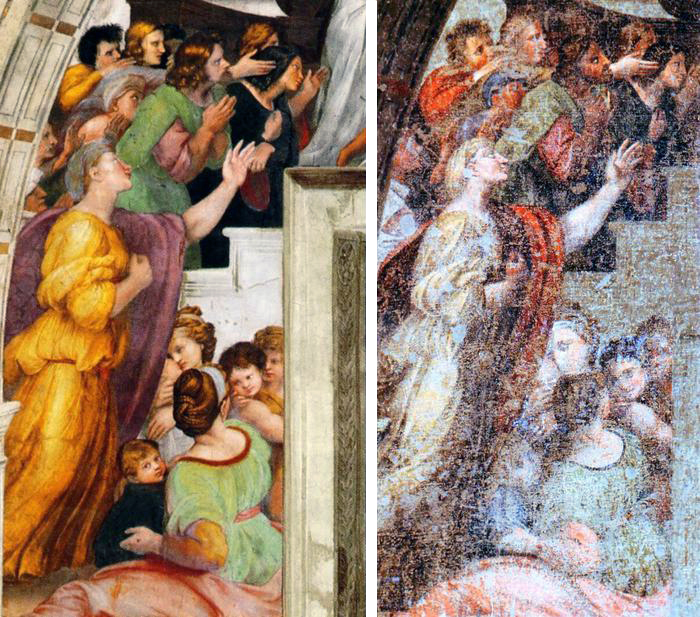
Raphael Rooms and the Paintings of Piazza Leandra in Civitavecchia
9. CIVITAVECCHIA MARITTIMA TRAIN STATION
Maybe somebody hasn't realised, but typing "Civitavecchia" on the official site of Trenitalia (try to believe!), among the options available there are a certain Civitavecchia Marittima and Civitavecchia Viale della Vittoria.
Well, don't let them fool you, because these are 2 incredible historic mistakes!
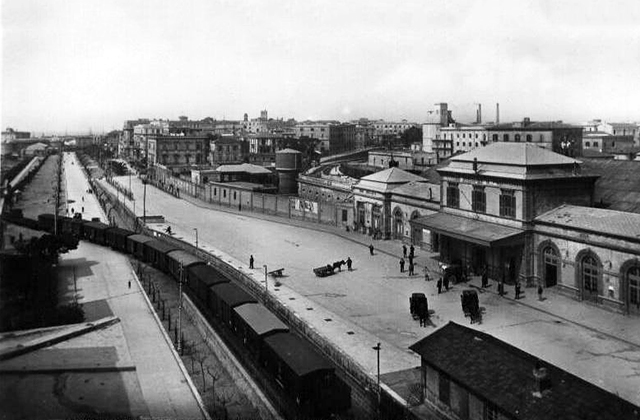
Civitavecchia Centrale Station and Viale della Vittoria
In fact, the station of Civitavecchia Marittima, active from November 15 1906, was a branch that started at the Station of Civitavecchia Centrale and stopped in front of the dock for ferries to Sardinia, with the aim to regulate the flow of passengers and goods.
The trips to Roma Termini coincided with the ferries, while trains bound for Rome made an intermediate stop at Civitavecchia Viale della Vittoria (in the street with the same name, by the Central station).
Since the rails crossed the city, it became a problem for cars and given that the trains ran coinciding with the departure of ferries, there often were major delays due to weather conditions.
Now these stations do not exist anymore and the last trip for the station of Civitavecchia Marittima took place on 18 October 2000!
Perhaps reading this article Trenitalia will correct the mistake but we -who are a little nostalgic- like to think that in one way or another we will be able to do a little trip back in time!
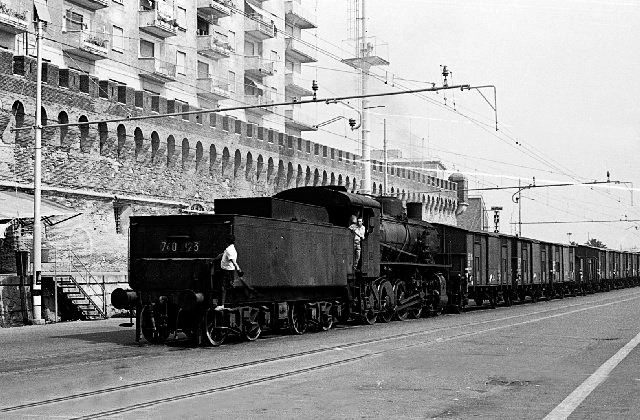
Civitavecchia Marittima Station
10. THE STATUE OF NEPTUNE IN THE SEA BOTTOM OF THE ROMAN HARBOUR
Few people know that between the museum halls of the Etruscan-Gregorian Museum in the Vatican is kept the bronze arm of a colossal statue of Neptune, which rests upon a dolphin, which can be glimpsed even a piece of the tail.
The discovery of the relic in the waters of the Roman Harbour in 1834 during the pontificate of Pope Gregory XVI has recently returned to attention thanks to Doctor Roberta Galletta who talks in his latest book "Roman Harbour - The Port of Civitavecchia".
Quoting the author "The statue would come from a pagan temple placed within the Roman Harbour and devoted to the God of the Sea, but, according to others, it was placed in the area of the old Church of Saint Mary. These hypothesis would be confirmed by the habit of building Christian temples over pagan buildings [...]"
[...] a third hypothesis [...] is based on an interesting pictorical documentation already pubblished in 1994 in the book "Civitavecchia in the Pope's medal 1508- 1857" by Adelmo Covati, Adolfo Modesti and Ennio Brunori.
In one of the frescoes painted by Cesare Nebbia, Paul Brill and Giovanni Guerra between 1588 and 1589 to celebrate the public ventures of Pope Sixtus V that embellish the Sistine Room of the Vatican Library, the colossal statue is placed at the end of the aqueduct build in 1589 by Pope Sixtus V, behind the Roman Harbour in the area next to today's Piazza Calamatta, next to the monumental fountain (Vanvitelli) connected to the aqueduct and built close to the old Medieval walls of the Rock.
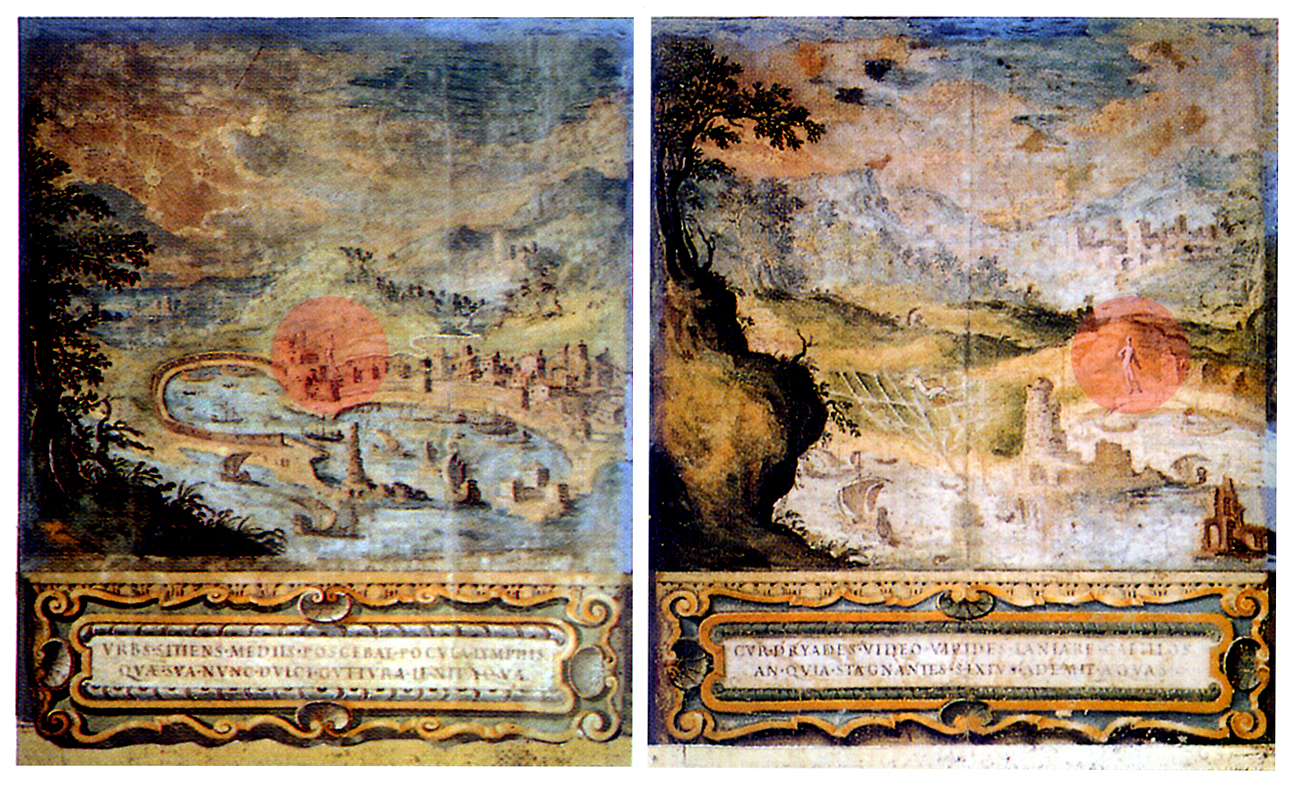
I due affreschi di C. Nebbia, P. Brill e G. Guerra che ritraggono la colossale statua e l'acquedotto nel Porto di Civitavecchia
[...] But there's more! The authors of the book mantain that the statue is not Neptune, but Trajan and that it was placed at the end of the precious building with the exact aim to give value to the historic continuity between Rome Imperial splendour and the new Sixtus V endeavours".
The mistery increases, but it is true that only further studies inside the Roman Harbour will tell who the statue actually represents, and its finding would open new important scenarios for the history of the city and the port of Civitavecchia.
In the meanwhile, within the Walls by Urban VII, in the suggestive spaces owned by Marine Service srl, which where in the past the Roman Warehouses and today house the travelling exhibit Navalia, has recently been found a part of the old aqueduct which is still working and where drinking water is flowing.
The aqueduct used to supply drinking water to vessels known as "onerarie", "quadriremi" and "quinqueremi" that departed or came from all over the Empire to the Port of Centumcelle.



 PORT MOBILITY CIVITAVECCHIA
PORT MOBILITY CIVITAVECCHIA








